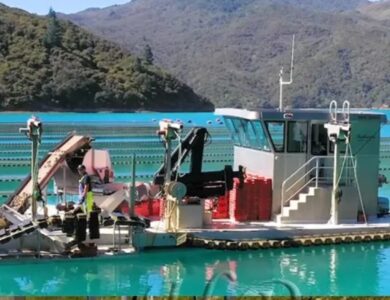How does gill net fishing work?

Gill net fishing stands out as a time-honoured technique that has been employed by fishermen for centuries. This method, characterized by its effectiveness and simplicity, relies on a specific design to trap fish efficiently. In this comprehensive exploration, we will delve into the mechanics of gill net fishing, from the structure of the gill net itself to the strategic deployment employed by skilled fishermen.
In this day and age, there are a number of tools and methods that are available at the disposal of fishermen to carry out their trade, including the fishing rope and fishing with a gill net, but their effectiveness depends heavily on the geographic locations and conditions, and there’s no one size fits all approach to fishing. One must carefully take these aspects into account, even when it comes to fishing with a gill net for the best possible results.
Understanding the Basics of Gill Net Fishing:
Fishing gill nets, often referred to simply as gill nets, are specialized tools designed to entangle fish by their gills as they attempt to pass through the net. The netting material is typically made of nylon or other durable synthetic fibres, carefully crafted to allow the mesh size to be specific to the target fish species. The fishing gill mesh size plays a crucial role in ensuring that only the desired fish are caught, promoting sustainable fishing practices. Such sustainable fishing measures must be borne in mind when it comes to a fishing net as well.
The Gill Net Structure:
A standard fishing gill net consists of a series of panels, each panel featuring a vertical series of meshes that gradually decrease in size from top to bottom. The top portion of the net is buoyant, typically supported by floats, while the bottom part has weights attached to maintain a vertical orientation in the water. This design ensures that the net hangs vertically in the water column, creating a barrier that captures fish attempting to swim through it.
Deployment of Gill Nets:
Successful fishing with a gill net involves strategic deployment based on various factors, including the target species, environmental conditions, and fishing regulations. Fishermen carefully position the nets in water bodies known to harbour the desired species, taking into account the depth, current, and the fish’s preferred migratory routes.
Fishing with a Gill Net – The Process:
Setting the Net:
Fishermen deploy fishing gill nets by setting them across the chosen water body, allowing the net to sink to the desired depth. Proper positioning is critical, as it determines the success of the catch.
Soaking Period:
After setting the gill net, it enters a soaking period during which it remains in the water, allowing fish to swim into it. The duration of the soaking period varies based on the target species and environmental conditions.
Retrieval:
Once the soaking period concludes, fishermen carefully retrieve the gill net, inspecting each mesh for caught fish. Skilled fishermen can gauge the success of the catch by the net’s weight and the tension felt during retrieval. Fishing with a gill net is something that requires a certain amount of skill and experience, something that one would certainly develop over a period of time.
Advantages of Gill Net Fishing:
Selective Fishing:
The design of gill nets allows for species-specific targeting, contributing to selective fishing practices. This selectivity helps reduce bycatch and minimizes the impact on non-target species. This aspect has turned out to be a major USP for fishing with a gill net, and the same can be witnessed with a fishing rope to a certain degree as well.
Cost-Effective:
Gill net fishing is a cost-effective method, requiring minimal equipment compared to some other commercial fishing techniques like fishing rope or trawlers. This efficiency makes it an attractive option for smaller-scale fishermen and local fisheries.
Historical Significance:
Gill net fishing, besides the fishing rope, has a rich history, deeply rooted in traditional fishing practices. Its time-tested effectiveness has allowed it to endure through generations, serving as a reliable method for sustaining fishing communities.
Challenges and Controversies:
While gill net fishing has its merits, it is not without its challenges and controversies. One notable concern is the issue of bycatch, where non-target species, including endangered or undersized fish, may become unintentionally entangled in the net. Efforts to mitigate bycatch often involve regulatory measures such as mesh size restrictions and seasonal closures.
Additionally, some environmentalists argue that gill net fishing can lead to overfishing if not managed responsibly. This concern has prompted the implementation of sustainable fishing practices, urging fishermen to adopt responsible techniques that prioritize the long-term health of fish populations and aquatic ecosystems.
Future Trends and Innovations:
As the fishing industry evolves, so do the technology and techniques associated with gill net fishing. Innovations such as the use of biodegradable materials for net construction, underwater cameras for real-time monitoring, and advanced sonar technologies for precise net placement are emerging to address environmental concerns and enhance the sustainability of gill net fishing.
Conclusion:
In the intricate fusion between man and nature, gill net fishing has proven itself as a reliable partner to generations of fishermen. The careful design, strategic deployment, and historical significance of gill nets contribute to their enduring popularity in various fishing communities. As we navigate the future of sustainable fishing practices, the evolution of gill net fishing will likely continue, incorporating technological advancements and responsible management strategies to ensure the preservation of aquatic ecosystems for generations to come.



